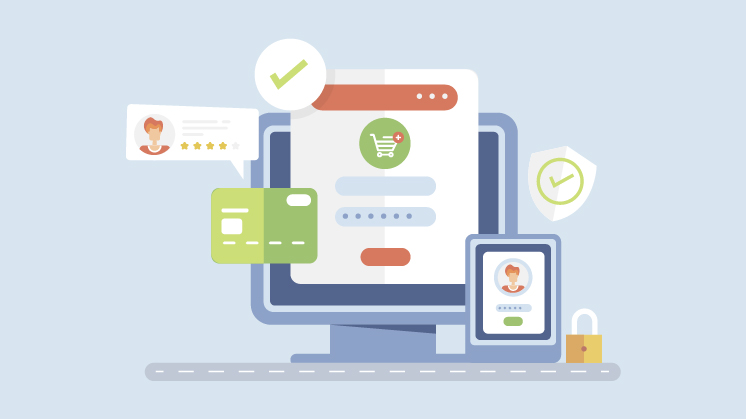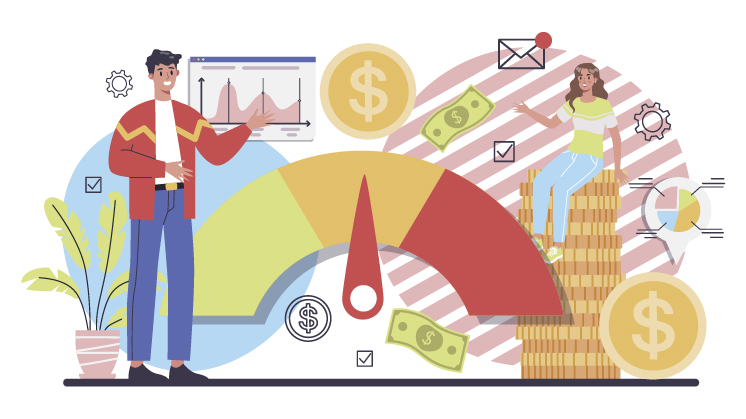As the world continues to evolve, so does the way we shop. With eCommerce becoming increasingly popular, it’s no surprise that new payment methods have emerged to meet the needs of consumers. One such method is partial payments – a game-changing solution that allows shoppers to pay for purchases in installments instead of all at once. In this blog post, we’ll explore how partial payments transform the eCommerce shopping experience and why they’re quickly gaining traction among online retailers and buyers alike.
Introduction to Partial Payments
As eCommerce continues to grow and evolve, so does how consumers pay for their purchases. In the early days of online shopping, customers could only pay for their orders in full using a credit or debit card. However, this is no longer the case. Now, there are many options for customers to pay for their orders over time, in installments, or partial payments.
One of the biggest driving forces behind this change is the rise of alternative financing options. At the same time, traditional financial institutions need to adapt to the needs of eCommerce shoppers. These companies offer payment plans that allow customers to spread out the cost of their purchases over time without accruing interest or fees.
This trend towards partial payments transforms the eCommerce shopping experience by making it more accessible and affordable for consumers. It also opens up new opportunities for retailers to increase sales and conversion rates by offering flexible payment options at checkout.
Benefits of Partial Payments in eCommerce

Partial payments in eCommerce offer several benefits for both businesses and customers. Here are some key advantages:
- Increased affordability: Partial payments allow customers to purchase without paying the full amount upfront. This makes products or services more accessible and affordable, especially for customers on a budget or those who prefer to spread out their expenses over time.
- Enhanced conversion rates: By offering partial payment options, eCommerce businesses can attract a larger customer base and increase conversion rates. Customers who may have hesitated to make a full payment upfront are more likely to purchase when they can pay in installments.
- Improved customer satisfaction: Flexible payment options, including partial payments, increase customer satisfaction. By accommodating customers’ financial preferences and providing greater convenience, businesses can enhance their shopping experience and build customer loyalty.
- Higher average order value: Partial payment options often encourage customers to spend more on purchases. With the ability to divide payments into smaller amounts, customers may be more inclined to add additional items to their cart or opt for more premium products, resulting in an increased average order value for eCommerce businesses.
- Reduced cart abandonment: Cart abandonment is a common challenge in eCommerce. Offering partial payment options can help combat this issue by addressing customers’ concerns about the total cost. By breaking down the payment into manageable chunks, customers are less likely to abandon their carts due to sticker shock or financial constraints.
- Access to a wider customer base: Partial payments make eCommerce more accessible to a broader range of customers. This includes individuals who may need more immediate funds but are interested in the products or services. By accommodating different financial situations, businesses can expand their reach and attract customers who would have otherwise been excluded.
- Lower financial risk: From a business perspective, partial payments can mitigate financial risks associated with large transactions. By receiving partial payments over a specified period, businesses can improve cash flow, reduce the impact of refunds or chargebacks, and manage their inventory and resources more effectively.
- Competitive advantage: Implementing partial payment options sets eCommerce businesses apart from competitors. It demonstrates a commitment to customer convenience and flexibility, helping to differentiate the brand and attract customers who prioritize payment flexibility in their shopping decisions.
Overall, partial payments in eCommerce contribute to increased sales, improved customer satisfaction, reduced cart abandonment, and a more inclusive shopping experience. By embracing this payment model, businesses can unlock growth opportunities and stay ahead in the competitive eCommerce landscape.
Understanding the Risks and Challenges of Accepting Partial Payments
When it comes to eCommerce, shoppers have come to expect a seamless and convenient experience. But as more and more businesses move towards offering partial payments in eCommerce to make big-ticket items more affordable, it’s important to understand the potential risks and challenges of this type of payment option.
For businesses, the biggest risk of offering partial payments is that shoppers may default. This can leave the business stuck with an unpaid balance and may even lead to legal action if the shopper refuses to pay. To mitigate this risk, businesses should clearly state the terms of their partial payment plans upfront and ensure a robust collection process for any missed or late payments.
Another challenge of offering partial payments is that tracking sales and revenue when customers make installments can be complex. If you’re not careful, this can make it difficult to forecast future sales and impact your bottom line. To overcome this challenge, businesses should consider using specialized accounting software that can help them track partial payments and understand their financial impact.
It’s important to remember that not all shoppers will be interested in or able to take advantage of partial payment options. For these shoppers, offering other financing options or discounts is important to help make their purchase more affordable. By understanding the risks and challenges associated with partial payments, you can ensure your business is prepared to offer this popular payment option while protecting your bottom line.
Strategies for Optimizing Partial Payment Solutions

As eCommerce continues to grow, so does the number of shoppers who are opting for partial payment solutions. While this can greatly increase sales and conversions, optimizing your partial payment solutions is important to ensure a positive customer experience. Here are a few strategies to keep in mind:
– Ensure your partial payment solution integrates with your existing shopping cart and checkout process. This will make it easier for customers to complete their purchases and avoid any confusion.
– Offer multiple partial payment options so that shoppers can choose the one that best suits their needs. For example, you could offer a 50/50 split or allow shoppers to pay in installments over time.
– Provide clear and concise instructions on how your partial payment solution works. This will help reduce any confusion or frustration on the part of the shopper.
By following these tips, you can ensure that your partial payment solution is optimized for success.
Real-World Examples of Successful Implementation of Partial Payment Options
The following are three real-world examples of eCommerce businesses that have successfully implemented partial payment options:
1. Flexible Payment Plans for Big-Ticket Items
One company that offers partial payment plans is Affirm, which provides financing for big-ticket items. Affirm allows customers to split their purchase into multiple payments, with interest rates and repayment periods that the merchant determines. For example, if you buy a $1,000 sofa from a store that partners with Affirm, you could choose to pay back $250 per month for four months with no interest or origination fees.
2. “Buy Now, Pay Later” Options for Everyday Purchases
Another company that has successfully implemented partial payment options is Afterpay, which offers “buy now, pay later” financing for everyday purchases. With Afterpay, you can make a purchase and then pay it off in four equal installments over eight weeks. There is no interest or added fees as long as you make your payments on time; however, there is a late fee if you miss a payment.
3. Layaway Plans for Future Purchases
Layaway plans are another type of partial payment option that can be successful if implemented correctly. With layaway, shoppers deposit an item and then make payments over time until the item is paid off in full. Once the item is paid in full, the shopper can take possession of it. Layaway plans are typically used for big-ticket items but can also be successful with smaller purchases.
Wrap Up
The rise of partial payments has had a tremendous impact on the eCommerce shopping experience, making it easier and more convenient for shoppers to purchase their desired items in an affordable way. It’s clear that this type of payment method will continue to grow in popularity as people become more comfortable with online purchases and recognize the value it brings to consumers. As merchants add new features like installment plans, loyalty programs, and other incentives, we can expect even more shoppers to take advantage of this trend and revolutionize how we shop online.